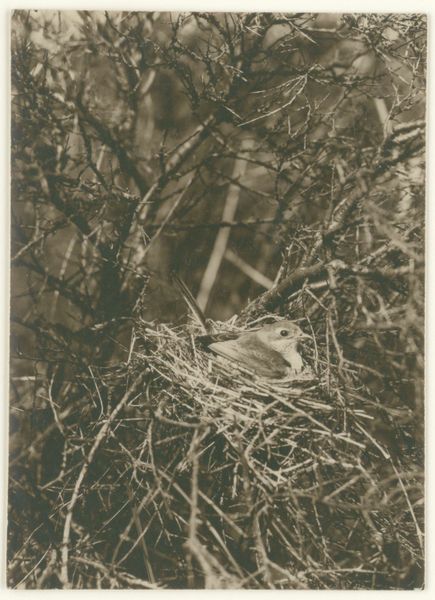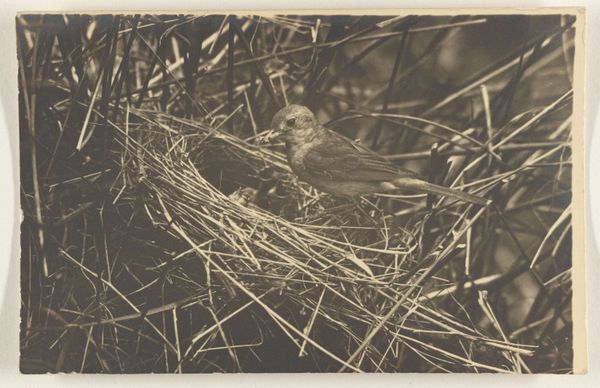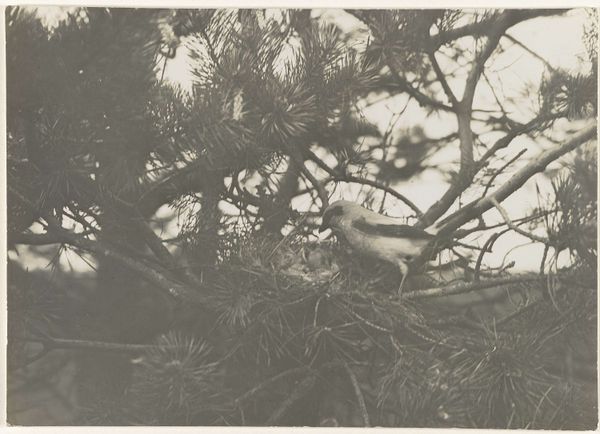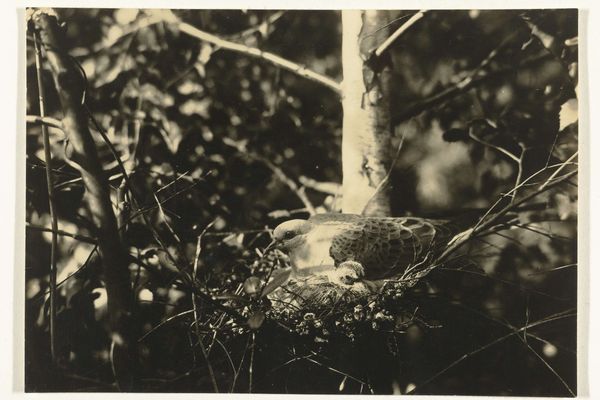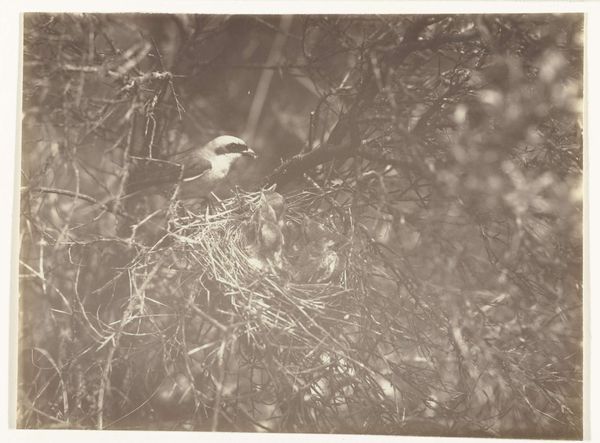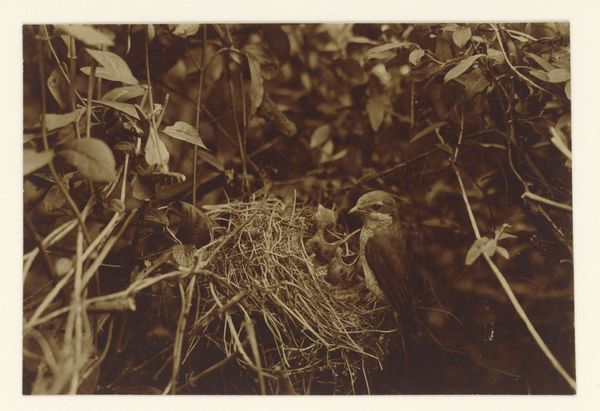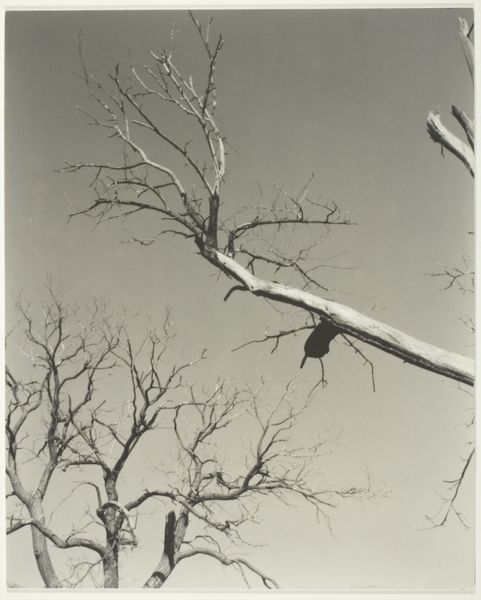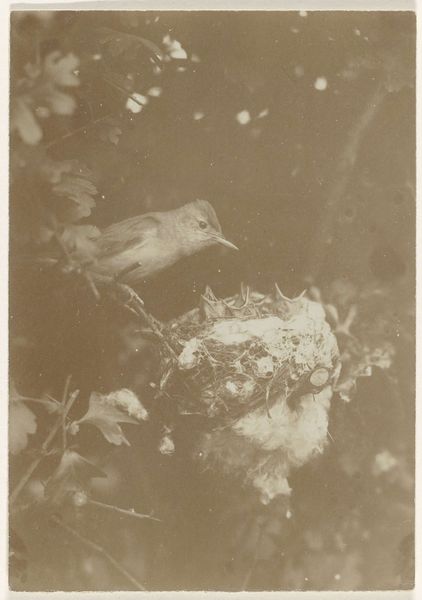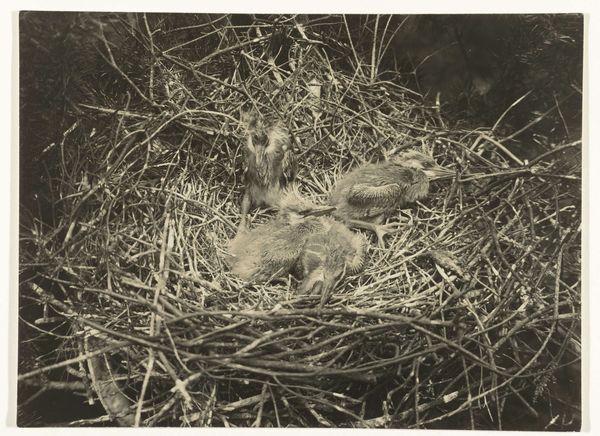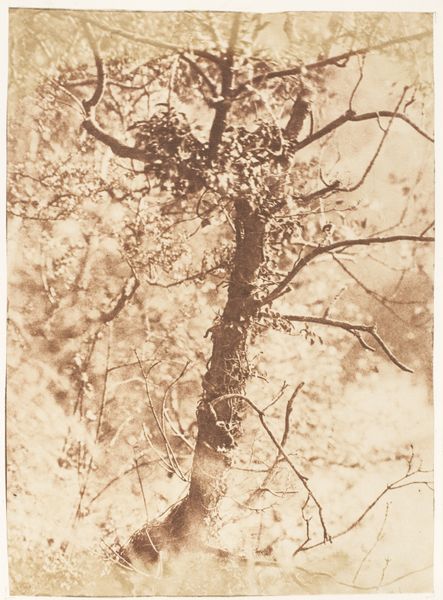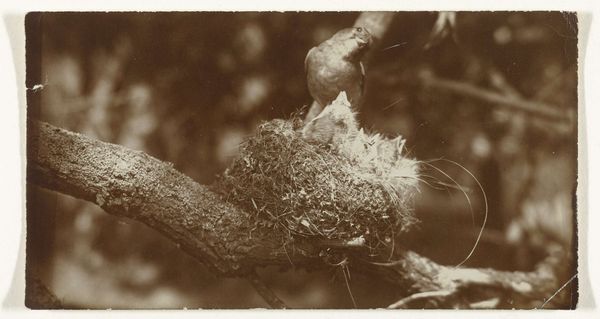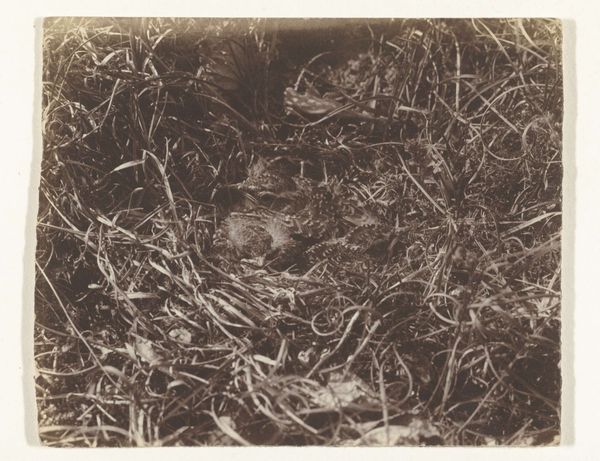
photography
#
organic
#
portrait
#
pictorialism
#
organic shape
#
landscape
#
photography
#
realism
Dimensions: height 167 mm, width 118 mm, height 171 mm, width 123 mm
Copyright: Rijks Museum: Open Domain
Editor: So, here we have Richard Tepe's photograph, "Grauw Klauwier wijfje op haar nest," taken sometime between 1900 and 1912. It depicts a female red-backed shrike on her nest. I'm immediately struck by the intricate detail and the way it captures a private moment in nature. What stands out to you in terms of its historical context? Curator: The photograph really reflects the growing interest in naturalism and conservation at the turn of the century. Tepe was capturing a very specific and vulnerable subject, the shrike and its nest. Considering the era, it highlights how photography was starting to be used not only for documentation but also for advocating environmental awareness. These images could be seen as contributing to the wider discussion on preservation and humanity's relationship with the natural world. Do you think this portrayal impacts how the audience sees its role in protecting nature? Editor: That's a great point. The photograph’s intimacy and vulnerability almost force the viewer to consider their impact on the environment. Knowing it was taken during a period of increasing industrialization makes that message even more poignant. Curator: Exactly. It subtly critiques the period's social and environmental values. Looking closer, do you think the setting or the composition adds to its narrative? Editor: I do! The nest is very carefully woven amidst this thorny bramble, a testament to both nature's resilience and its precarity. The photograph almost feels like a statement on the delicate balance being threatened at the time. Curator: And considering the institutions displaying images like this - do you believe they helped to encourage similar awareness? How did institutions promote the role of art as advocacy? Editor: I would hope so. By showcasing pieces like Tepe's photography, art institutions demonstrated photography as both beautiful art and meaningful social commentary. I'm fascinated by how this single image can carry such weight. Curator: Indeed. Analyzing Tepe's image, it's clear that art serves as a lens to examine cultural values and social advocacy of the past, as well as prompt conversations today.
Comments
No comments
Be the first to comment and join the conversation on the ultimate creative platform.
